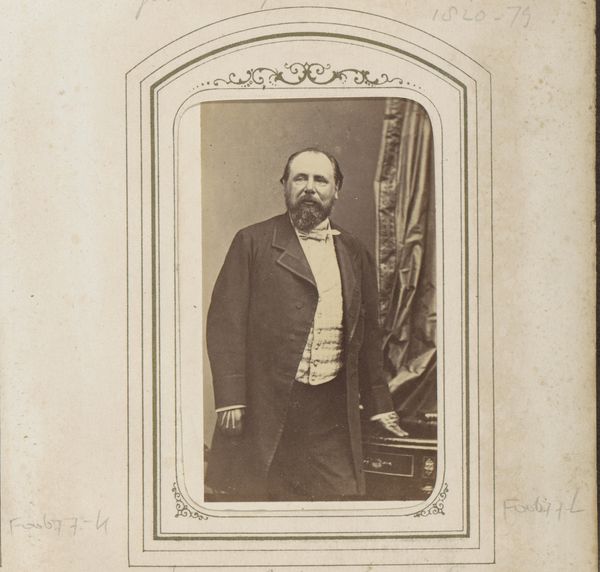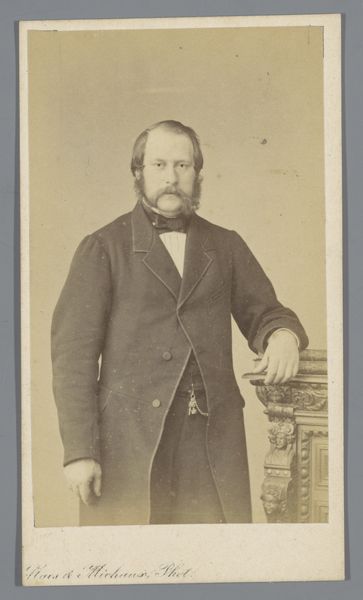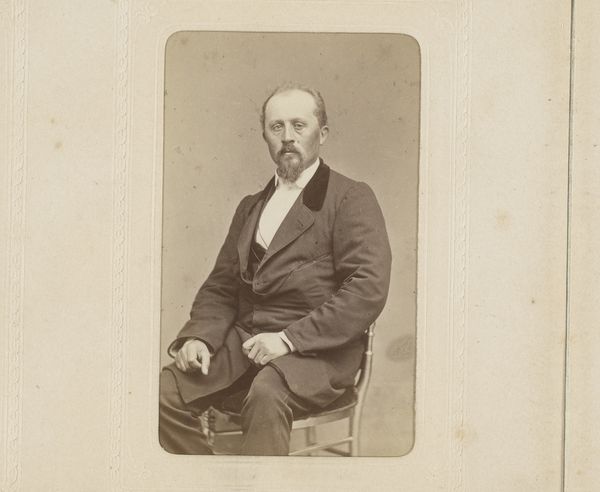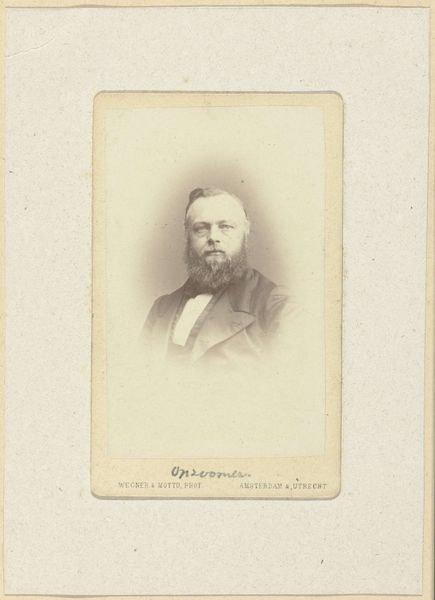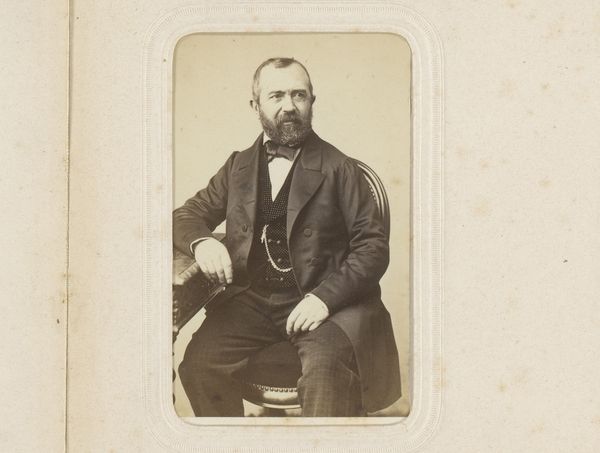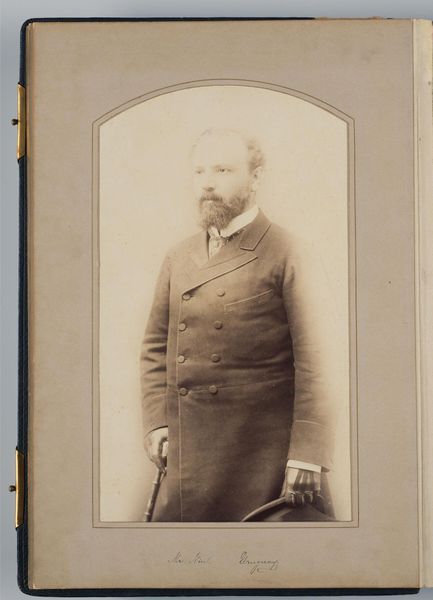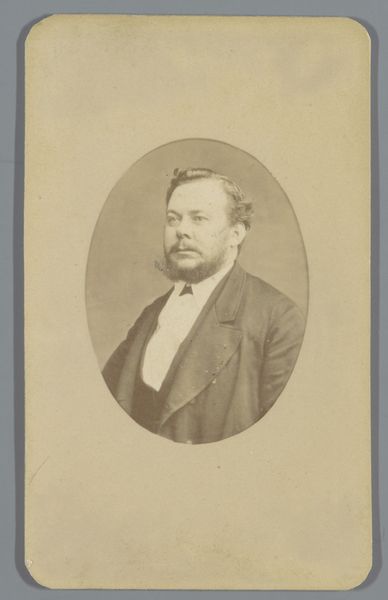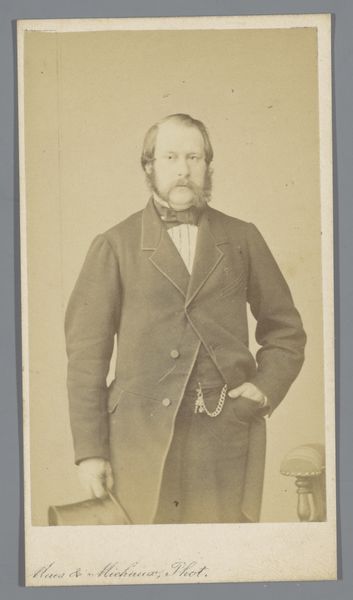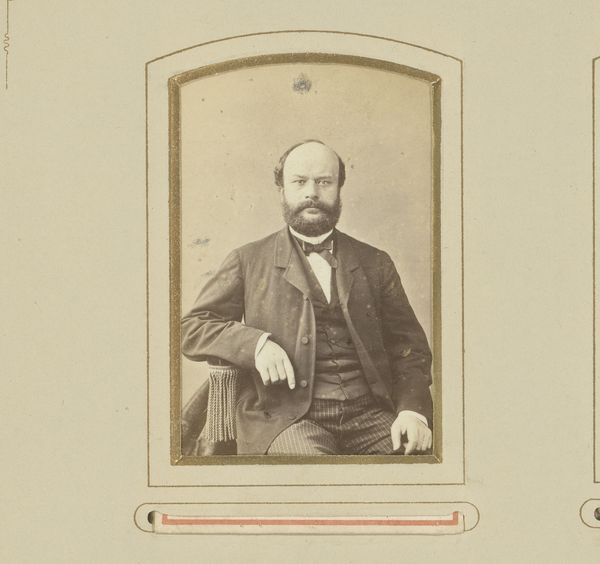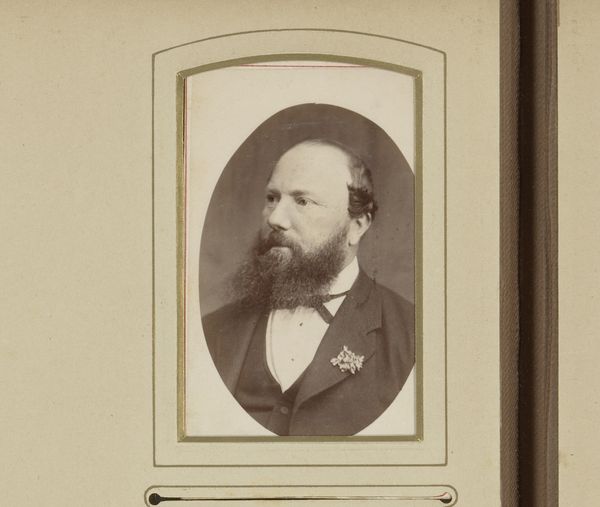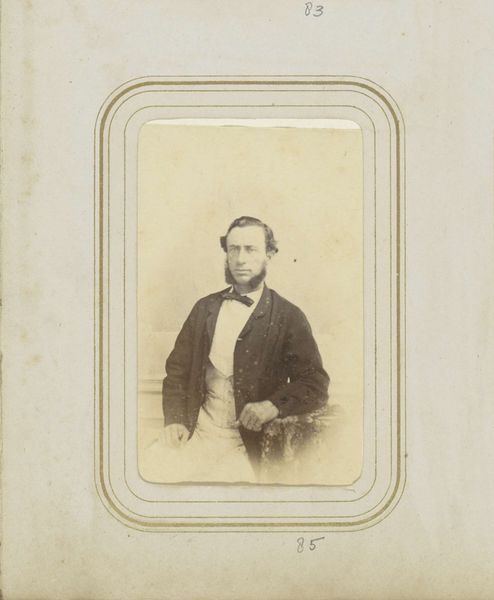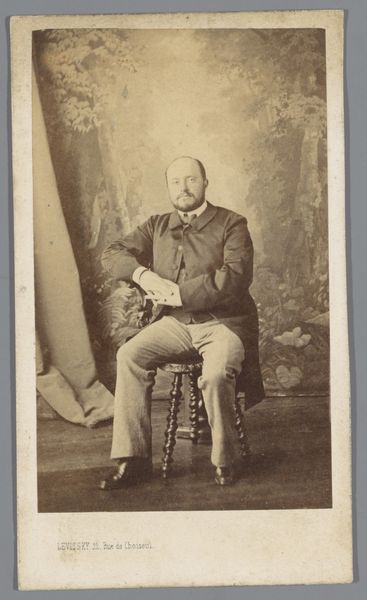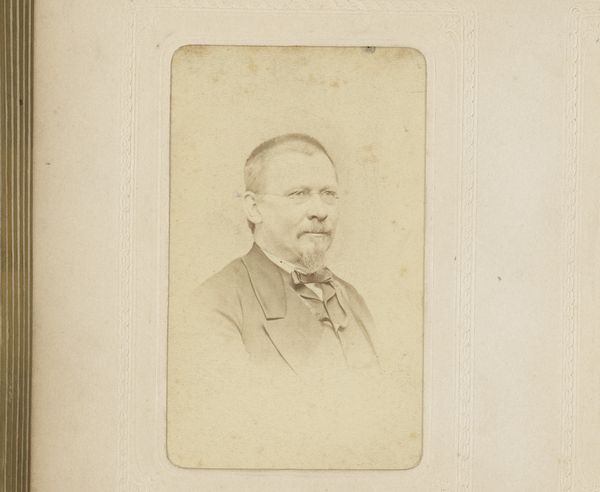
photography
#
portrait
#
photography
#
19th century
#
realism
Dimensions: height 81 mm, width 53 mm, height 100 mm, width 61 mm
Copyright: Rijks Museum: Open Domain
Editor: This is a photograph entitled "Portret van Willem III, koning der Nederlanden," dating from somewhere between 1855 and 1870, attributed to André-Adolphe-Eugène Disdéri. The sepia tones give it an antique feel, almost melancholic. How do you read this portrait? Curator: I see a portrait deeply embedded in the power dynamics of the 19th century. Photography, still relatively new, was quickly adopted by the elite as a means of solidifying their image and authority. Consider how the trappings of royalty – the suit, the suggestion of a regal setting – reinforce a particular narrative. What isn't shown is just as important. What does this curated image tell us about the relationship between monarchy and representation at this time? Editor: So it’s less about capturing reality and more about constructing a carefully managed persona? Curator: Exactly. And who controls that construction? Disdéri, the photographer, certainly plays a role, but ultimately it serves the sitter and the monarchy itself. Think about the social context: a time of rapid industrialization, growing social unrest, and evolving ideas about national identity. The photograph becomes a tool to project stability and tradition, a counter-narrative to the forces of change. How does this influence our viewing of the artwork? Editor: It gives it a kind of weight, knowing that so much thought went into crafting this image for a specific purpose beyond just a likeness. It makes you wonder about the expressions that weren't caught, the sides of the story that were left untold. Curator: Precisely. By examining not just what is presented but the social, political, and theoretical contexts surrounding it, we start to understand the portrait as a cultural artifact deeply implicated in the power structures of its time. Editor: I guess it’s a reminder to always look beyond the surface. Thanks.
Comments
No comments
Be the first to comment and join the conversation on the ultimate creative platform.
